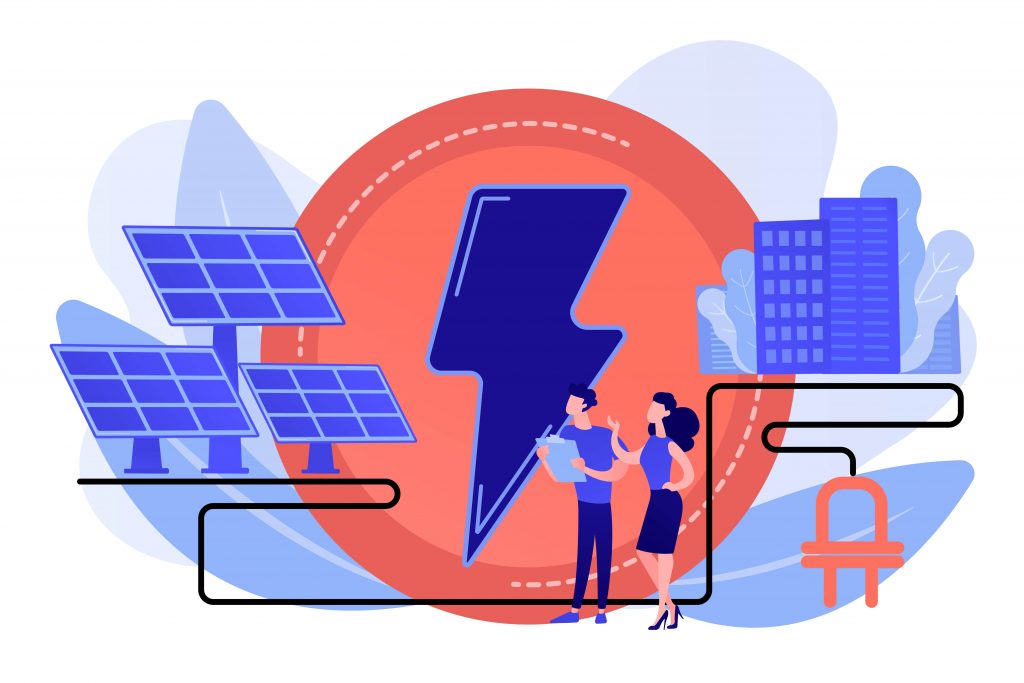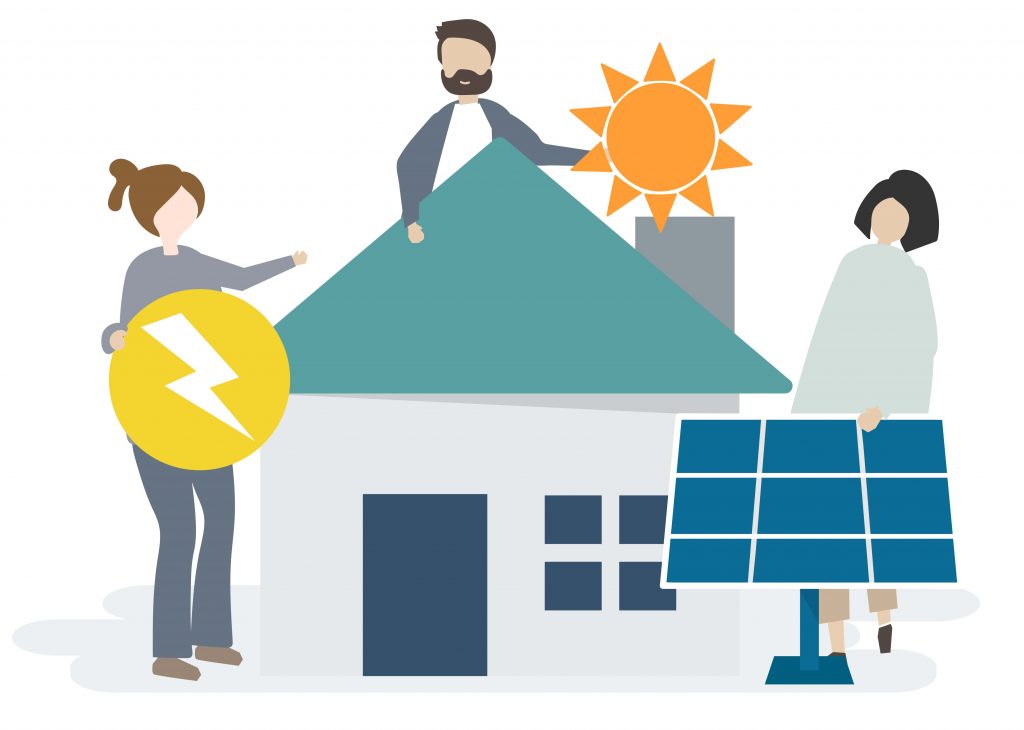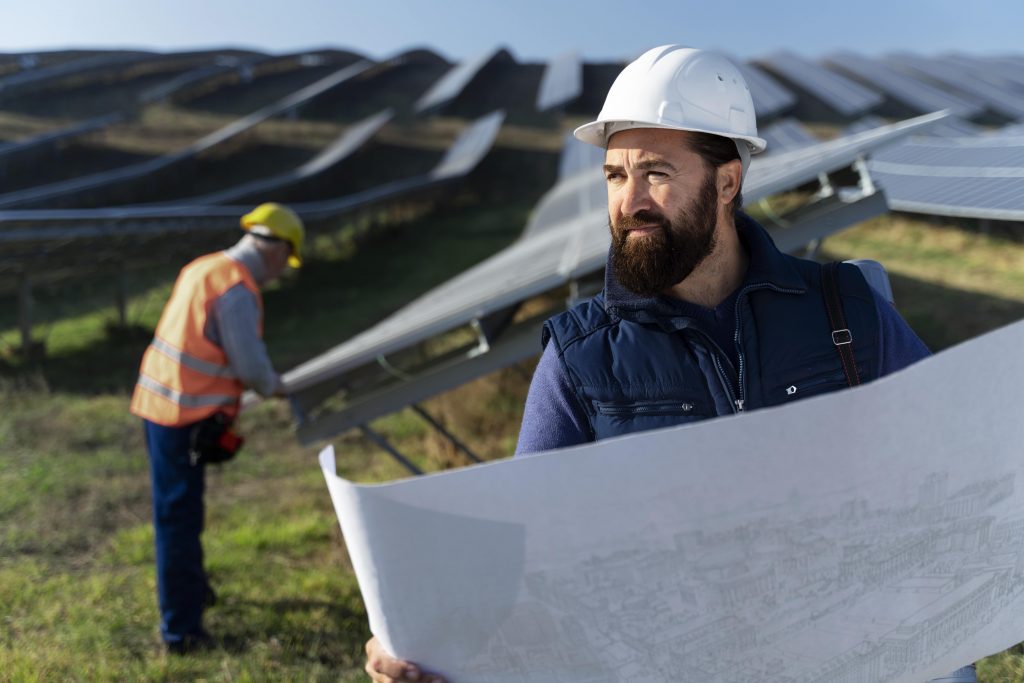Copper rate
27. November 2025
: upper CUN
967,88
EUR/100kg
KBE Elektrotechnik GmbH | Symeonstraße 8, 12279 Berlin | GERMANY
+49 (0)30 / 25 208-100

All electrical systems require protection against surges, electric shocks, and potential electrical damage. The same applies to solar systems.
In connection with installation, terms such as equipotential bonding, protective equipotential bonding, and grounding are often used – both in new construction and when retrofitting a PV system.
Below, we clarify the most important terms and explain why protective equipotential bonding is necessary for solar systems.
A clear definition of terms is necessary here, because protective equipotential bonding is a special form of equipotential bonding.
Equipotential bonding involves connecting all conductive parts of the system to compensate for voltage differences and is divided into, among other things:
Earthing, on the other hand, means that there is a connection from the system (as a whole or parts of it) to the earth so that the electrical currents can be diverted to the earth in the event of overvoltages or lightning strikes.
Here, too, a distinction is made between protective grounding and functional grounding. While protective grounding serves to protect people from electric shock, functional grounding serves operational purposes.
In practice, the terms equipotential bonding and grounding are often used synonymously. Strictly speaking, however, equipotential bonding is a connection between the individual components of a system.
Grounding, on the other hand, serves to conduct electrical currents to the ground. However, protective equipotential bonding and grounding are usually combined to compensate for voltage differences and prevent contact voltages.

Photovoltaic (PV) systems are often located on roofs, where they are exposed to the elements and can be a potential target for lightning strikes. Protective equipotential bonding and protective grounding of PV systems therefore offer the following advantages:
Furthermore, the safety of a system is not just a matter of advantages. It is a legal requirement and standard.
DIN VDE 0100 serves as the basis for the planning and installation of safe electrical systems. In addition, the following standards apply, which you must observe for solar systems:
| Standard | Description |
|---|---|
| DIN VDE 0100-410 (Protection against electric shock) | The standard describes the requirements for protection against electric shock in low-voltage installations. It specifies basic and fault protection measures to protect people and livestock from electric shock. These include: Automatic power shutoff requires at least IPXXB or IP2X protection. Reinforced or double insulation of conductors. Protective earthing conductors must comply with the specifications of DIN VDE 0100-540. Protective equipotential bonding ensures the prevention of dangerous voltage differences by connecting all conductive parts to the main earthing bar. |
| DIN VDE 0100-540 (Selection and installation of electrical equipment – earthing systems and protective conductors) | The standard regulates how to safely design grounding and equipotential bonding. This allows you to avoid hazards, ensure device functionality, and reduce interference caused by electromagnetic influences. This standard is particularly applicable to IT and communications systems, which modern solar power systems now include. Among other things, this standard regulates the following aspects: Requirements for connecting conductive parts to earth to dissipate dangerous voltages. You must use corrosion-resistant materials for the protective conductors when grounding the photovoltaic system, such as copper, aluminum, or steel. The cross-section for protective equipotential bonding must not be less than 6 mm² for copper, 16 mm² for aluminum, and 50 mm² for steel. You must mark the protective conductors green-yellow along their entire length. However, which specific regulations apply and which cable types meet the requirements also depend on the system itself. Therefore, please also observe the manufacturer's specifications and the required cross-sections. |
| DIN VDE 0100-712 (Photovoltaic power supply systems) | This standard specifies measures that specifically increase the safety of PV systems. In addition to the labeling requirement and installation specifications, the focus is on protective measures. These include, among others: Protective equipotential bonding in solar systems is important for protection against electric shock. They must prevent overheating or arcing to avoid fire. Appropriate cable gauges, current ratings, and fire-resistant materials ensure this. Surge protection is mandatory for solar systems. All installed components must comply with applicable standards. Careful and comprehensive documentation is also required. Carefully document the installed components, measured values, protective performance, properties, and installation work so that you can verify them later during an inspection. This information is even useful for system maintenance. |
| DIN VDE 0185-305 (lightning protection) | The regulations of this standard relate to lightning protection for people and structures. For solar systems, this means demonstrating adequate internal or external lightning protection. In addition to meeting certain regulations, you must also conduct a lightning strike risk analysis and determine protective measures. |
Other standards you should take a look at:
For protective equipotential bonding in solar systems, you must include all relevant components and use standardized cables. Furthermore, there are different ways to connect them to establish protective equipotential bonding.

To ensure proper protective equipotential bonding of the solar system, you must include all metal parts that come into contact with the wiring.
These also include:
If there are other conductive parts that come into contact with the components, such as a water line or pipe leading into the house, these must also be included in the protective earthing of the PV system.
According to standards, you must use corrosion-resistant materials. Examples of suitable materials include copper or aluminum.
Copper is particularly suitable because it is more resilient and has higher conductivity. This allows you to choose a smaller cross-section for the protective equipotential bonding than with aluminum. While the minimum cross-section for copper is 6 mm², for aluminum it is 16 mm².
For a lightning protection system, the cross-section increases, and you need 16 mm² for copper and 25 mm² for aluminum. Aluminum, on the other hand, has the advantage of being lighter and more cost-effective. However, it is less flexible and more conductive than copper. The insulation should also be thick enough. UV-resistant cables are also beneficial for solar systems.
Should you choose a solid conductor or stranded wire?
Although a solid conductor is more stable and often has greater corrosion resistance, stranded wires still offer several advantages. For example, their greater flexibility reduces the risk of breakage and makes them easier to install.
When it comes to the connection type, you can choose between the following options depending on the system and conditions:
Caution: You cannot solder cable connections for protective equipotential bonding in a solar system. This can lead to short circuits and fires due to the high voltages and currents involved.

To establish protective equipotential bonding, you can follow these steps:
Lightning protection and protective equipotential bonding work hand in hand in solar systems. This is how you can distinguish between external and internal lightning protection.
External protection captures lightning and conducts it to the grounding system. Protective equipotential bonding, on the other hand, is part of internal lightning protection – it prevents voltage differences during a lightning strike. In other words: The lightning protection system diverts lightning, while protective equipotential bonding reduces the impact on the system and the building.
Surge protection is also part of internal lightning protection. It is important for protecting electrical and electronic devices from damage caused by lightning strikes or other voltage surges. There are different types of devices that you can install for surge protection in solar systems.
| Device type | Area of application | Installation |
|---|---|---|
| type 1 | Discharge of lightning currents to earth | This surge protection is typically installed at the main distribution board, usually in the meter cabinet or directly behind the main switch. A 3+1 circuit is often used here. The phase conductors (L1, L2, L3) are connected to the neutral conductor (N), which in turn is connected to the protective conductor (PE) via a spark gap. |
| type 2 | Protection against overvoltages (e.g. switching operations, lightning strikes in the power grid) | Installation close to the meter, in the main distribution board or sub-distribution board (often directly after the electricity meter). For cable runs longer than 10 meters, you should install additional Type 2 surge arresters in the sub-distribution boards. |
| type 3 | Protects devices from overvoltages and residual overvoltages | This type of switch must be installed directly in front of the device you want to protect—e.g., at the electrical outlet. The distance to the device should be close and at least 10 meters from the power switch or circuit breaker. |
The protective earthing of the PV system also depends on whether it is a grid-connected system or an off-grid system.
Grid-connected solar systems require comprehensive lightning protection because they are connected to the public power grid. This includes integrating all conductive parts into the central equipotential bonding system, as well as careful grounding and surge protection devices on the DC and AC sides to protect against grid overvoltages. They also require protection against grid disturbances.
Off-grid systems, on the other hand, operate independently of the grid and usually use their own grounding point. The focus of lightning protection? Protecting sensitive components. Combine devices of different classes, such as Type 1 at the main distribution board, Type 2 at the sub-distribution board, and Type 3 directly at the device.
Finally, we have some practical tips for installers who plan and implement protective equipotential bonding in a solar system:
Then stop by our shop! Our solar cables from KBE Elektrotechnik not only guarantee excellent technical properties and a long service life, but are also triple-certified. They comply with the European standard EN 50618 (H1Z2Z2-K), the international solar cable standard IEC 62930 (IEC 131), and the standard 2Pfg 1169 /10.2019 (PV 1500-K).
Use our UV-resistant solar cables and bring your project to a successful conclusion!